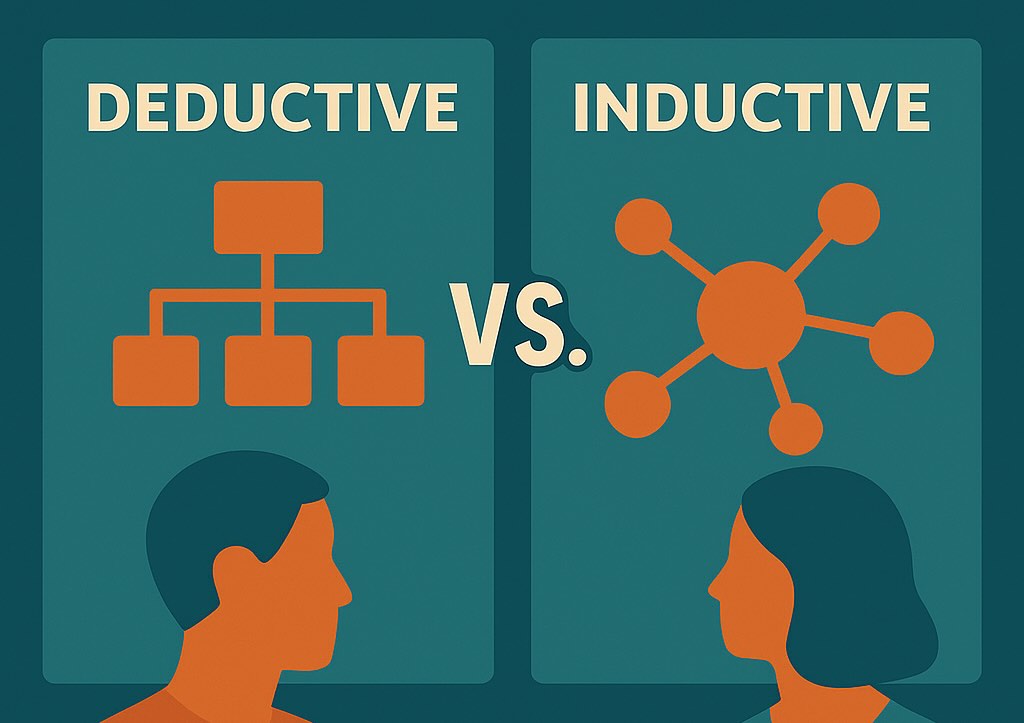Analysing consultation data effectively is essential to making informed decisions based on community input. However, many teams struggle to select the appropriate method to extract meaningful insights. Two primary methods—Deductive and Inductive theming—can significantly impact the outcomes of your consultations. Understanding these methods and their applications will ensure you maximise the value of your engagement efforts.
What is Theming in Consultation Data Analysis?
"Theming" involves identifying, categorising, and interpreting key topics and insights from qualitative data such as feedback, survey responses, or discussion forums. Effective theming is crucial as it transforms raw data into structured insights, guiding policy and decision-making.
Understanding Deductive Theming
Deductive theming is a top-down analytical method where predefined themes or categories guide data analysis. Teams using this approach start with a clear framework and apply these themes directly to the data.
Typical use cases:
- Consultations with specific questions or known issues.
- Projects using standardised frameworks.
Strengths:
- Efficient and straightforward.
- Aligns clearly with objectives and predefined criteria.
Limitations:
- May overlook new or unexpected insights.
- Less flexible in exploratory contexts.
Understanding Inductive Theming
Inductive theming is a bottom-up analytical method allowing themes to naturally emerge from the data without preconceptions. This method involves examining data closely and identifying patterns organically.
Typical use cases:
- Open-ended consultations.
- Exploratory research or community feedback sessions.
Strengths:
- Flexible, adaptable, and sensitive to new insights.
- Captures detailed, nuanced information.
Limitations:
- Can be more time-consuming.
- May require advanced analytical skills without supporting tools.
Deductive vs. Inductive: A Comparative Analysis
Deductive Theming
- Lower flexibility due to predefined themes
- Faster, efficient analysis
- Suitable for structured engagements
- May miss unexpected insights
Inductive Theming
- High flexibility, allows new themes to emerge naturally
- Potentially more time-intensive
- Ideal for open-ended engagements
- Captures rich, detailed insights
Practical Examples: Which Method Suits Your Needs?
Deductive Example: A city council conducting a structured survey about proposed urban planning initiatives. The council knows precisely what topics to address (e.g., transportation, housing), making deductive theming ideal.
Inductive Example: An open community forum discussing general improvements in neighborhood amenities. No predetermined categories exist, so inductive theming helps uncover the community’s genuine priorities.
Why Not Both? Integrating Deductive and Inductive Approaches
In practice, combining deductive and inductive methods can leverage both structured and exploratory strengths. Platforms like Communiti Analysis facilitate this hybrid approach, allowing users to start with predefined themes while still discovering emergent insights organically.
Tips for Choosing the Right Approach
- Clearly identify your consultation objectives and the nature of your data.
- Consider your team’s expertise, available resources, and timelines.
- Assess the complexity and depth of insights required.
- Opt for a hybrid method when your consultation involves both structured and exploratory questions.
How Communiti Analysis Simplifies Both Approaches
Communiti Analysis streamlines both deductive and inductive theming with powerful, user-friendly features such as:
- Custom codebooks to define and apply deductive themes.
- Automated tagging and inductive thematic analysis capabilities.
- Real-time collaboration for efficient teamwork and insightful decision-making.
By automating complex analysis processes, Communiti Analysis significantly reduces the time required while enhancing accuracy and consistency.
Choosing between deductive and inductive theming depends significantly on your consultation's goals, the nature of your data, and the desired insights. Combining these approaches with the right analytical tools, such as Communiti Analysis, ensures comprehensive and actionable results.
Ready to optimise your consultation data analysis? Experience the capabilities of Communiti Analysis firsthand—schedule a demo or contact Communiti Labs today.
